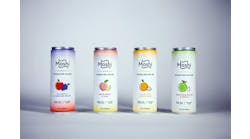Food and beverage industry executives are less optimistic about the sale of their products in 2004, despite successful rollouts in 2003, reports the first Grant Thornton Survey of U.S. Food and Beverage Companies. According to the survey, taken between March and May of this year and released in August, 53 percent of respondents foresee difficulty in the rollout of their products over the next 12 months. However, when asked if their company had difficulty in their 2003 rollouts, 48 percent of respondents attest they had not, while only 29 percent say that they had. “Consumer loyalty is much lower than in previous years. This lack of loyalty is motivating food and beverage companies to introduce products faster and sometimes with shorter lifecycles,” says Dexter Manning, Grant Thornton consumer and industrial products industry partner. “New product introductions are targeting various consumer groups, such as Boomers, Gen X, Gen Y and ethnic groups, instead of the general public as a whole.” A factor contributing to executives’ doubts is the unstable commodities market. Over the past five years, commodity prices have grown out of sight, thanks to foreign demand, droughts and unusual crop situations. Although some crop recovery has occurred in the past year, the majority of survey respondents believe the current trend in commodity pricing will continue, with 74 percent foreseeing an increase in prices over the next year. Another factor to worry executives may be the industry’s growing list of business-related costs. Over the next five years, survey respondents predict a rise in their health and regulatory spending, with 30 percent of respondents expecting increases of 5 to 10 percent and 29 percent anticipating increases of 11 to 20 percent, as FDA and USDA requirements continue to expand. Respondents have reacted proactively to their concerns, however, establishing methods for combating product proliferation challenges by increasing education to their brokers and sales force (43 percent), as well as increasing inventory turn (24 percent). More importantly, surveyed executives remain positive about their industry as a whole. According to respondents, despite business concerns, economic instability and international political unrest, they eagerly anticipate a rise in merger, acquisition and restructuring efforts within the coming year, with 79 percent of surveyed executives predicting such activity in 2004 and 76 percent foreseeing an increase in 2005. Survey respondents also foresee a rise in industry employment rates in the near future, with 45 percent anticipating an increase in 2004 and 46 percent in 2005. U.S. food and beverage companies commissioned by Grant Thornton LLP, a worldwide but Chicago-based accounting and business advisory organization.
Latest from New Food Products
Latest from New Food Products

